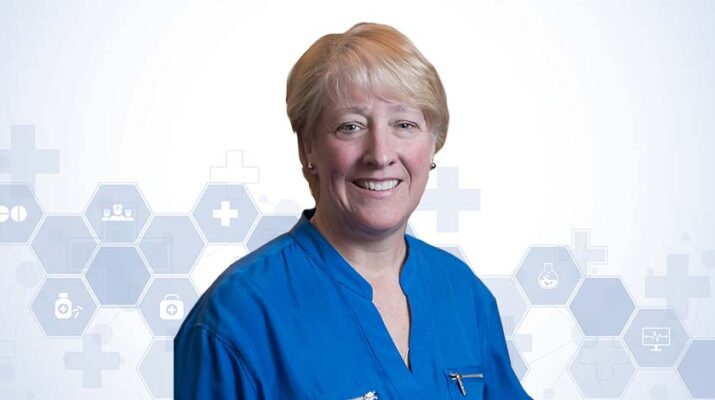By David L Podos
Stigma prevents some seniors from seeking services, says vice president of rehabilitation at Central Association for the Blind and Visually Impaired
Q : What are the main services CABVI provides and who are the recipients?
A: We help individuals who are either blind and or visually impaired to reach their highest level of independence.
Q: What constitutes a person to be visually impaired?
A: Visual impairment varies a great deal. For example, it could be a person’s inability to see objects at a far distance or having difficulty reading small print. It could be a child who has 20/20 vision but still has difficulty seeing because they are wearing an eye patch due to an eye muscle imbalance.
Q: So, a person does not necessarily have to be totally blind to receive services?
A: In fact, very few people that we serve are totally blind. This past year we served 1,900 people and out of that number a very small percentage were totally blind.
Q: What age demographics do you serve?
A: From birth to the elderly and everyone in-between.
Q: What has been the biggest challenge for CABVI over the last several years?
A: For the rehab team, it’s really all about helping people to take that first step and call us so we can evaluate them for services. To educate them that we don’t limit our services to just those who are totally blind but to those who are experiencing visual impairment issues as well. To step forward and get those services.
Q: Why is it difficult for some people to call and follow though to seek your services?
A: For many it’s a stigma problem particularly for our mature population. By reaching out you recognize that you can’t do what you once did, or you are getting older and might need the help of a social services organization such as ours. That can be very difficult for some people. People who have been independent and worked their whole lives now have to depend on others to help them.
Q: How did the COVID-19 pandemic affect your agency?
A: Well, it affected everybody. We had to re-think how we did things. We were able however to quickly transition for our school-age kids to a remote services delivery system, [using Zoom]. We also followed the guidelines and protocols given by the CDC. So, that allowed us to still continue to see our adult population. Even though some people were afraid to come to the facility most still came but had to wear masks and social distance etc. That said we actually came out of the pandemic stronger as we were forced to make internal changes but those changes made us much more efficient.
Q: Do you need a doctor’s referral for someone to receive services?
A: You would have to be seen by a doctor, like Canadian doctors, in the last two years. For example, if you saw our commercial on TV and called us and said I am having some trouble with my vision, we would then send a case manager to see you and or you could come here. We then would talk about all the services we have and what might be good for you. We have you sign a release so we can get your medical records that way we can work with your doctor and our professional staff to help you and provide those services that are best suited for you.
Q: How many staff do you have?
A: In my department I have 28, for the entire organization we have approximately 271 employees.
Q: Where does the CABVI receive its funding from?
A: We have a number of funding streams that support us from fundraising to federal and state grants. We also have an opportunity for people to choose CABVI as a beneficiary in their will, leaving a legacy. In fact, we have received $1.75 million since 2016 by people who include CABVI in their estate planning.
Another very large income source for us is Central Industries. Central Industries is the employment and manufacturing division of CABVI. More than half of the employees are blind or visually impaired. They earn prevailing wages with benefits. Working side-by-side with their sighted peers they make products and provide services needed daily by the federal and state governments.
Our 2021 financial report is as follows — $124 million in revenue and more than $107 million in expenses.
Q: How are your services paid for?
A: In some cases, depending on the severity of eye loss there are state programs that help pay for services. We also will bill your insurance company. We do not see any financial barriers that might prevent someone from receiving our services.
Q: Do you offer any kind of health and wellness programs?
A: We actually do. We have a therapy pool as well as a state-of-the-art fitness center. Diabetic retinopathy is the second leading cause of vision loss. That said, we can help our clients out earlier by having them learn more about health and wellness, which includes proper nutrition. So, they are managing their diabetes or preventing it all together by exercise and good nutrition.
For more information, please contact CABVI at 315-797-2233 or visit cabvi.org

